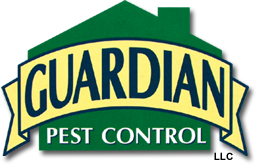

A plant illness is any unsafe condition that makes a plant not the same as a typical plant in its appearance or capacity. Microbes include organisms, microorganisms, infections, viroids, and mycoplasmas. Nematodes are at times considered plant sickness specialists on account of the kind of injury they cause to the host plant. Pathogenic Plant Diseases Pathogens that cause plant sickness are parasites that live and benefit from plant garbage and on or in have plants. Many can be passed starting with one plant then onto the next. The illness interaction begins when the microorganism shows up at a piece of a plant where disease can happen. If natural circumstances are great, the microorganism will start to create. Contamination starts when the microbe enters the plant. The plant is infected when it answers Pest Control Essex . The three primary ways a plant answers are: overdevelopment of tissue, like nerves, swellings, and leaf twists, underdevelopment of tissue, like hindering, absence of chlorophyll, and fragmented advancement of organs, and passing of tissue, for example, curses, leaf spots, wilting, and cankers. The microorganisms that cause plant illnesses might be spread by the wind; downpour; bugs, birds, snails, slugs, and worms; relocate soil; nursery joins; vegetative proliferation (particularly in strawberries, potatoes, and many blossoms and ornamentals); defiled hardware and apparatuses; contaminated seed stock; dust; dust storms; water system water; and individuals.
Parasites
Parasites are plants that need chlorophyll and can’t make their food. They get food by living on different creatures. A few parasites live on dead or rotting natural matter. Most are useful because they assist with letting supplements out of dead plants and creatures and in this way add to soil ripeness. These parasites can be a big issue when they decay or stain wood. They can cause impressive harm to structures and timber that are inappropriately ventilated or in touch with water or high stickiness.
Most growths that cause plant infections are parasites on living plants. They might go after plants and plant items both above and underneath the dirt surface. Some growth pathogens attack many plant species, yet others are limited to just a single host animal group. Most parasites recreate by spores, which work about the same way seeds do. Growth spores are frequently tiny and are delivered en masse. A few spores can make due for weeks, months, or even a long time without a host plant. Unreasonable water or high stickiness is almost generally fundamental for spore germination and dynamic parasitic development. Spores can spread from one plant to another and be harvested to edit through wind, downpour, water system water, bugs, and bug-like vermin, and by individuals through tainted attire and hardware.
Contagious diseases oftentimes are recognized by the vegetative body of the growth (mycelium) and the fruiting bodies that produce the spores. These can as a rule be seen with the unaided eye. Side effects of contagious diseases incorporate delicate decay of organic products, plant hindering, mucks, rusts, leaf spots, withering, and thickening or twisting of leaves. Fine and fleece buildup, filth, root, and stem decay, and dingy and sludge molds are instances of parasite illnesses.
Microscopic organisms
Microbes are minute, one-celled life forms. They normally repeat by single-cell division. Each new cell is similar to the parent. Microorganisms can develop rapidly under warm, sticky atmospheric conditions. Some can separate like clockwork. Microbes might go after any piece of a plant, either above or beneath the dirt surface. Many leaf spots and decays are brought about by microbes.


